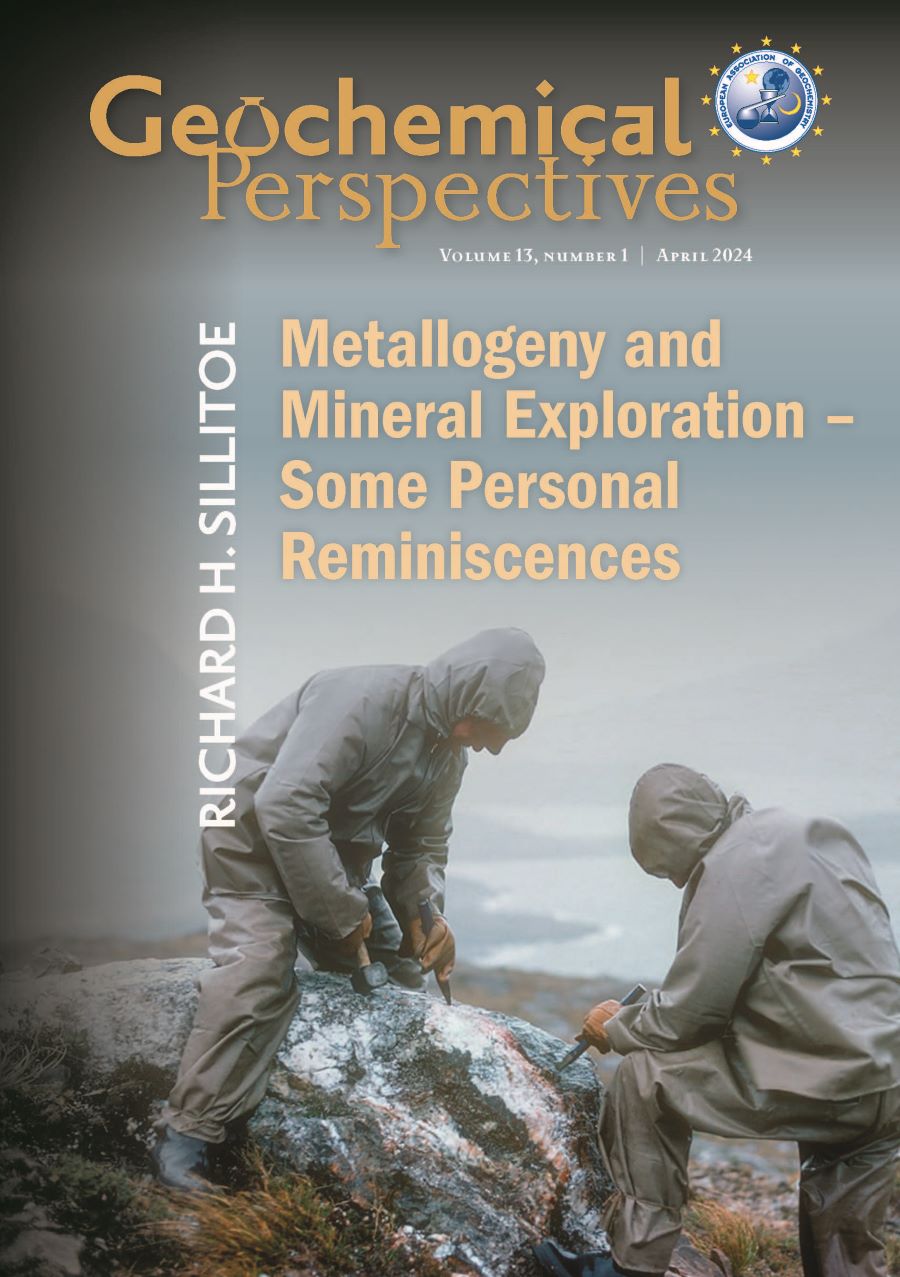
Metallogeny and Mineral Exploration – Some Personal Reminiscences
by Richard H. Sillitoe1doi: 10.7185/geochempersp.13.1 | Volume 13, Number 1 (pages 1-196)
Please note this issue is currently out of stock. It will be possible to purchase print copies again from November 2024.
Abstract
The following personalised narrative aims to document the highlights of my involvement in some of the ground breaking developments in Economic Geology and their direct application to mineral exploration and discovery over the past half century. The story begins with my introduction to geology at secondary school and university, followed by doctoral research based on fieldwork in the Andes of South America. Then, as an employee of the Chilean Geological Survey, I got my introduction to porphyry copper deposits before returning to the UK to take up a post-doctoral research fellowship. This formative period concluded with my starting out as an independent geological consultant to the global exploration and mining industry.
These early years happened to coincide with the plate tectonics revolution and its radical implications for metallogeny. I realised that porphyry copper and related deposits are integral parts of volcano-plutonic arcs generated during subduction of oceanic lithosphere, and volcanogenic massive sulphide deposits in ophiolite complexes must have formed at oceanic spreading centres. At approximately the same time, application of K-Ar dating to copper deposits led to definition of metallogenic belts and corresponding epochs in the Andes, and then established the timing of their economically important supergene oxidation and enrichment. Subsequently, using more modern and precise U-Pb zircon and Re-Os molybdenite methods, collaborative attempts were made to determine porphyry copper deposit lifespans and ages of various copper belts, deposits and prospects around the world, including the Zambian Copperbelt.
The focus on porphyry copper deposits led first to an appreciation of the linkage between them and subaerial volcanism and the importance of potassic alteration as a major host of hypogene copper mineralisation, and then to geological characterisation of the increasing number of gold-rich examples. Appreciation of the importance of hydrothermal breccias in porphyry copper deposits, including recognition of mineralised diatremes, resulted in a classification scheme for breccias that may be extended to related deposit types. Extensive fieldwork showed that zones of advanced argillic alteration, termed lithocaps, constitute the shallow parts of porphyry copper systems. The role of tectonic uplift in both porphyry copper formation and subsequent supergene modification was also charted. The end result of this body of work was a porphyry copper model that can be used as a basic exploration guide.
In response to a marked increase in the world gold price in the late 1970s, more effort was devoted to gold concentrations in magmatic arc terranes, commencing with epithermal gold deposits in the shallow lithocaps of porphyry copper systems. This led to an input to classification schemes for epithermal precious metal deposits and, eventually, to assignment of the three main epithermal types to specific tectono-magmatic settings. After years of speculation, porphyry gold deposits were recognised for the first time in northern Chile, followed by definition of a new gold deposit class in association with relatively reduced granitic intrusions. A magmatic-hydrothermal origin for Carlin-type gold deposits was steadfastly supported over many years, notwithstanding its unpopularity until relatively recently, culminating in a proposal for modern analogues.
For decades, metallogenic provinces and corresponding epochs have been widely appreciated, but debate concerning their origin(s) persists. The nature of accompanying magmatism could well provide an adequate explanation for at least some provinces (e.g., tin, molybdenum and possibly silver), but precursor metal enrichment in the lowermost crust and/or subcontinental lithospheric mantle may well be required in the case of gold and copper provinces.
The story concludes with brief commentary on mineral exploration, which has been my lifelong (pre)occupation. Requirements for success in mineral exploration are discussed, based primarily on familiarity with the circum-Pacific region, followed by analysis of the types of companies and individuals involved and the burgeoning challenges to the exploration process, which, if not remedied, will have dire consequences for future metal production and global plans for the energy transition.
My involvement as a lone practitioner in both mineral exploration and metallogenic research probably says something about my independent character traits, but nonetheless has been largely unstructured and certainly unplanned. I have no hesitation in recommending a similar career path for any recent graduate who relishes adventure and is prepared to endure significant work-life imbalance.

